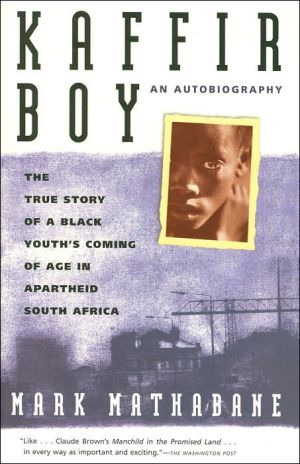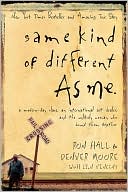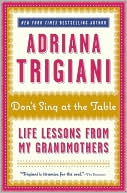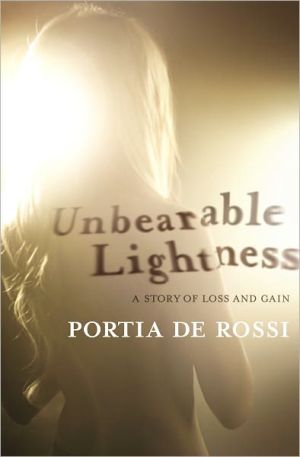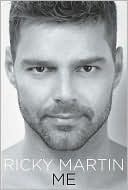Kaffir Boy: The True Story of a Black Youth's Coming of Age in Apartheid South Africa
The Classic Story of Life in Apartheid South Africa \ Mark Mathabane was weaned on devastating poverty and schooled in the cruel streets of South Africa's most desperate ghetto, where bloody gang wars and midnight police raids were his rites of passage. Like every other child born in the hopelessness of apartheid, he learned to measure his life in days, not years. Yet Mark Mathabane, armed only with the courage of his family and a hard-won education, raised himself up from the squalor and...
Search in google:
The Classic Story of Life in Apartheid South Africa Mark Mathabane was weaned on devastating poverty and schooled in the cruel streets of South Africa's most desperate ghetto, where bloody gang wars and midnight police raids were his rites of passage. Like every other child born in the hopelessness of apartheid, he learned to measure his life in days, not years. Yet Mark Mathabane, armed only with the courage of his family and a hard-won education, raised himself up from the squalor and humiliation to win a scholarship to an American university. This extraordinary memoir of life under apartheid is a triumph of the human spirit over hatred and unspeakable degradation. For Mark Mathabane did what no physically and psychologically battered "Kaffir" from the rat-infested alleys of Alexandra was supposed to do -- he escaped to tell about it. Publishers Weekly Kaffir Boy (1984), one of the best books ever written about apartheid, became a bestseller everywhere but in South Africa, where it is banned. This absorbing sequel, about Mathabane's life in the U.S. since he arrived here at age 18 in 1978 on a tennis scholarship, describes his painful experiences at three colleges in one year and in American society generally. He recalls his editorship of a college paper, disenchantment with the Columbia School of Journalism, encounters with racism, threats to his life, living on a shoestring budget, speaking out against racism, his decisions to become a writer, live in North Carolina and marry a white woman, his success (with Oprah Winfrey's help) in bringing members of his family on a visit to America and in arranging for some of his siblings to remain here to study. Mathabane is a remarkable human being: responsible, committed, reasonable, level-headed, humane, understanding and empathetic. He tells a wonderful, inspiring story and he tells it well. (June)
Preface\ I am always asked to explain what it felt like to grow up black under South Africa's system of legalized racism known as apartheid, and how I escaped from it and ended up in America. This book is the most thorough answer I have heretofore given.\ The last thing I ever dreamed of when I was daily battling for survival and for an identity other than that of inferiority and fourth-class citizen, which apartheid foisted on me, was that someday I would attend an American college, edit its newspaper, graduate with honors, practise journalism and write a book.\ How could I have dreamed of all this when I was born of illiterate parents who could not afford to pay my way through school, let alone pay the rent for our shack and put enough food on the table; when black people in Alexandra lived under constant police terror and the threat of deportation to impoverished tribal reserves; when at ten I contemplated suicide because I found the burden of living in a ghetto, poverty-stricken and without hope, too heavy to shoulder; when in 1976 I got deeply involved in the Soweto protests, in which hundreds of black students were killed by the police, and thousands fled the country to escape imprisonment and torture?\ In Kaffir Boy I have re-created, as best as I can remember, all these experiences. I have sought to paint a portrait of my childhood and youth in Alexandra, a black ghetto of Johannesburg, where I was born and lived for eighteen years, with the hope that the rest of the world will finally understand why apartheid cannot be reformed: it has to be abolished.\ Much has been written and spoken about the politics of apartheid: the forced removals of black communities from their ancestral lands, the Influx Control and Pass laws that mandate where blacks can live, work, raise families, be buried; the migrant labour system that forces black men to live away from their families eleven months out of a year; the breaking up of black families in the ghettos as the authorities seek to create a so-called white South Africa; the brutal suppression of the black majority as it agitates for equal rights. But what does it all mean in human terms?\ When I was growing up in Alexandra it meant hate, bitterness, hunger, pain, terror, violence, fear, dashed hopes and dreams. Today it still means the same for millions of black children who are trapped in the ghettos of South Africa, in a lingering nightmare of a racial system that in many respects resembles Nazism. In the ghettos black children fight for survival from the moment they are born. They take to hating and fearing the police, soldiers and authorities as a baby takes to its mother's breast.\ In my childhood these enforcers of white prerogatives and whims represented a sinister force capable of crushing me at will; of making my parents flee in the dead of night to escape arrest under the Pass laws; of marching them naked out of bed because they did not have the permit allowing them to live as husband and wife under the same roof. They turned my father — by repeatedly arresting him and denying him the right to earn a living in a way that gave him dignity — into such a bitter man that, as he fiercely but in vain resisted the emasculation, he hurt those he loved the most.\ The movies, with their lurid descriptions of white violence, reinforced this image of white terror and power. Often the products of abject poverty and broken homes, many black children, for whom education is inferior and not compulsory, have been derailed by movies into the dead-end life of crime and violence. It is no wonder that black ghettos have one of the highest murder rates in the world, and South African prisons are among the most packed. It was purely by accident that I did not end up a tsotsi (thug, mugger, gangster). It was no coincidence that, until the age of ten, I refused to set foot in the white world.\ The turning point came when one day in my eleventh year I accompanied my grandmother to her gardening job and met a white family that did not fit the stereotypes I had grown up with. Most blacks, exposed daily to virulent racism and dehumanized and embittered by it, do not believe that such whites exist. From this family I started receiving "illegal books" like Treasure Island and David Copperfield, which revealed a different reality and marked the beginning of my revolt against Bantu education's attempts to proscribe the limits of my aspirations and determine my place in South African life.\ At thirteen I stumbled across tennis, a sport so "white" most blacks thought I was mad for thinking I could excel in it; others mistook me for an Uncle Tom. Through tennis I learned the important lesson that South Africa's 4.5 million whites are not all racists. As I grew older, and got to understand them more — their fears, longings, hopes, ignorance and mistaken beliefs, and they mine — this lesson became the conviction that whites are in some ways victims of apartheid, too, and that it is the system, not they, that has to be destroyed; just as it was Hitler's regime that had to extirpated, not the German people. Such an attitude helped me survive the nightmare into which my life was plunged by the Soweto protests of 1976. A tennis scholarship to an American college, arranged by the professional tennis player Stan Smith, in 1978, became my passport to freedom.\ Kaffir Boy is also about how, in order to escape from the clutches of apartheid, I had to reject the tribal traditions of my ancestors. It was a hard thing to do, for there were many good things in my African heritage, which, had it been left to me to choose freely, I would have preserved and venerated. I, too, had the burning need like human beings everywhere to know where I came from, in order to better understand who I was and where I was going in this world. But apartheid had long adulterated my heritage and traditions, twisted them into tools of oppression and indoctrination. I saw at a young age that apartheid was using tribalism to deny me equal rights, to separate me from my black brothers and sisters, to justify segregation and perpetuate white power and privilege, to render me subservient, docile and, therefore, exploitable. I instinctively understood that in order to forge my own identity, to achieve according to my aspirations and dreams, to see myself the equal of any man, black or white, I had to reject this brand of tribalism, and that in the rejection I ran the risk of losing my heritage. I took the plunge.\ Being in America has afforded me the rare opportunity of gaining a proper perspective on my African heritage, of looking at South Africa critically, of understanding what it means to be regarded as a human being, of learning about the nitty-gritty of a democracy and, most important, of using the pen to fight against injustice and racism in my native land.\ My family is still in Alexandra, undergoing the same hardships I describe in this book. The youths of my generation have become more militant, the tools of repression have become more numerous and sophisticated and black schools and ghettos have become centers of social protest and bloody conflict with the police and soldiers. South Africa has entered its darkest hour, and all its sons and daughters have a responsibility, a duty, to see to it that truth and justice triumph. I hope to do my part.\ I would like to thank Edward T. Chase and Dominick Anfuso, my editors at Macmillan, and Fifi Oscard and Kevin McShane, my agents, for their support and encouragement throughout the writing of this book. I would also like to thank Jeanne Moutoussamy-Ashe and Hajima Ota, whose photographs have been invaluable.\ New York, 1986\ Copyright © 1986 by Mark Mathabane
\ From the Publisher\ "Like . . . Claude Brown's Manchild in the Promised Land . . . in every way as important and exciting." -- The Washington Post\ "This is a rare look inside the festering adobe shanties of Alexandra, one of South Africa's notorious black townships. Rare because it comes . . . from the heart of a passionate young African who grew up there." -- Chicago Tribune\ "Powerful, intense, inspiring." -- Publishers Weekly\ \ \ \ \ \ Publishers Weekly - Publisher's Weekly\ Kaffir Boy 1984, one of the best books ever written about apartheid, became a bestseller everywhere but in South Africa, where it is banned. This absorbing sequel, about Mathabane's life in the U.S. since he arrived here at age 18 in 1978 on a tennis scholarship, describes his painful experiences at three colleges in one year and in American society generally. He recalls his editorship of a college paper, disenchantment with the Columbia School of Journalism, encounters with racism, threats to his life, living on a shoestring budget, speaking out against racism, his decisions to become a writer, live in North Carolina and marry a white woman, his success with Oprah Winfrey's help in bringing members of his family on a visit to America and in arranging for some of his siblings to remain here to study. Mathabane is a remarkable human being: responsible, committed, reasonable, level-headed, humane, understanding and empathetic. He tells a wonderful, inspiring story and he tells it well. June\ \ \ Library JournalThis is a sequel to Kaffir Boy LJ 4/15/86, a best-selling account of Mathabane's youth in a black township in South Africa. It deals with his life in America as a student, writer, and outspoken opponent of apartheid. Like many sequels, this one lacks the power of the original. Kaffir Boy vividly details the horrors of growing up black in a society premised on radical racial discrimination; its wrenching story virtually grabs the reader by the throat. The sequel, in which the author describes both his trials and successes in coping with and ultimately taking advantage of American mobility, pales in comparison. Still, this work does nicely describe the author's ambivalence toward the United States--both America's lure and its continuing racial problems. Generally well written, it is appropriate for most academic and public libraries.-- Anthony O. Edmonds, Ball State Univ., Muncie, Ind.\ \
